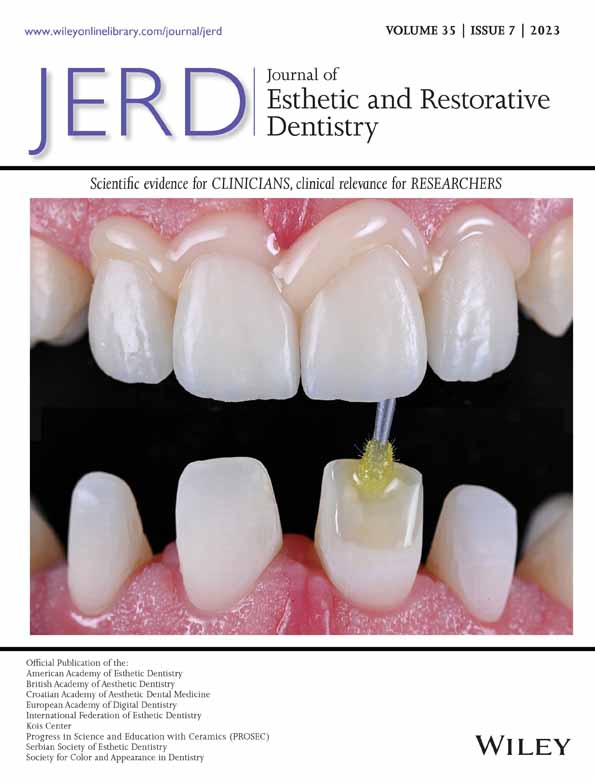Full-mouth rehabilitation in a completely digital workflow using partially adhesive monolithic zirconia restorations
Abstract
Objective
This clinical case describes a completely digital workflow using current digital technologies for a full-mouth adhesive rehabilitation with ultra-translucent multilayer zirconia restorations.
Clinical Considerations
A healthy 60-year-old man with abfractions on all upper and lower molars and severe tooth wear underwent a full-mouth rehabilitation with laminate veneers and partial adhesive restorations. A proper zirconia bonding protocol was realized to provide a durable bond between the ultra-translucent zirconia and the resin cement. Furthermore, the implementation of a digital workflow enables the clinician to have an effective communication during treatment planning and simplify the clinical and laboratory procedures, providing the patient with long-term esthetic treatment and functional results.
Conclusion
The implementation of a completely digital workflow and the use of ultra-translucent multilayer zirconia for indirect adhesive restorations can be an alternative with simplified and predictable procedures for patients with dental wear and teeth discolorations.
Clinical Significance
The digital workflow described is intended to facilitate the planning and execution of a full-mouth adhesive rehabilitation and demonstrates to clinicians a reliable zirconia bonding concept for minimally invasive anterior and posterior restorations.
Open Research
DATA AVAILABILITY STATEMENT
The data that support the findings of this study are available on request from the corresponding author. The data are not publicly available due to privacy or ethical restrictions.




